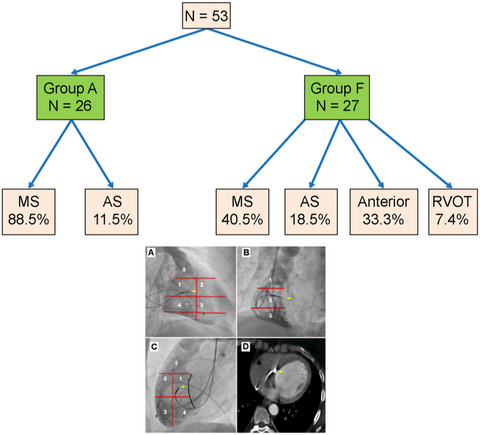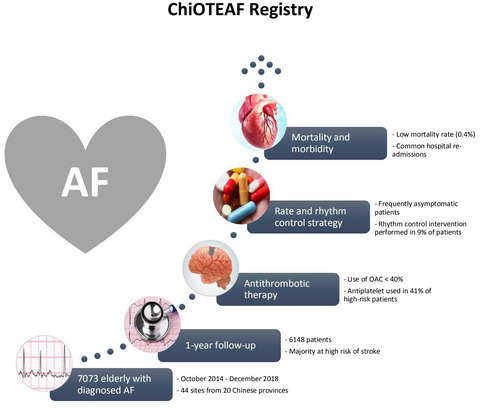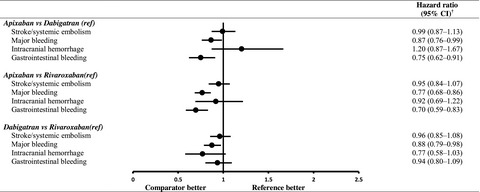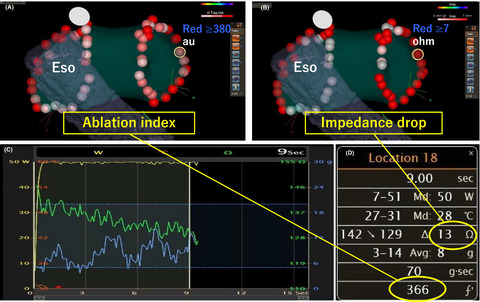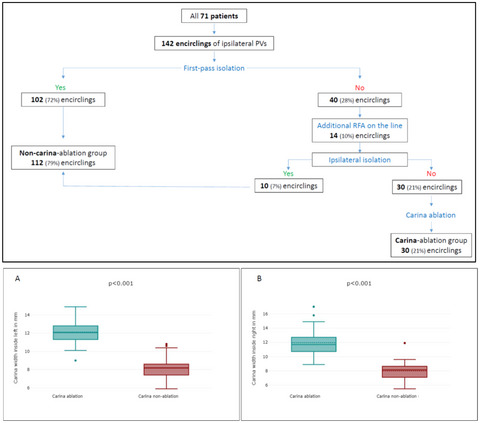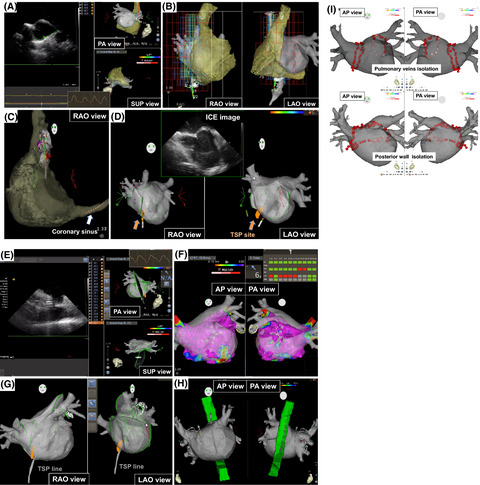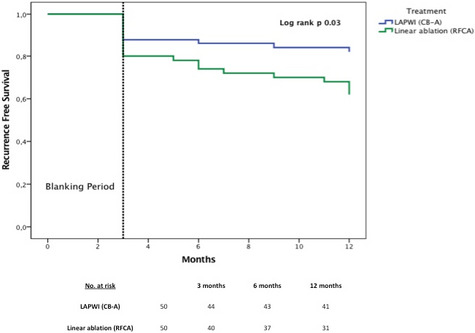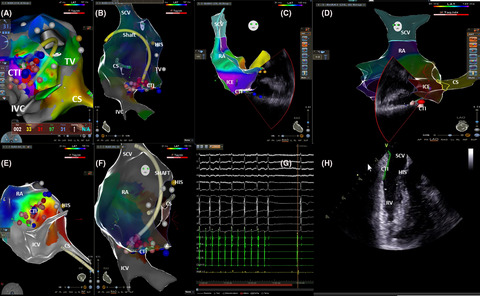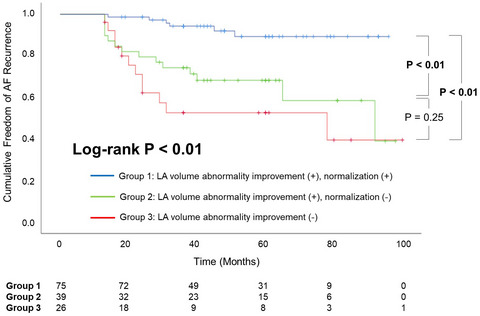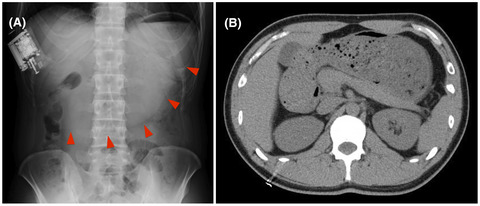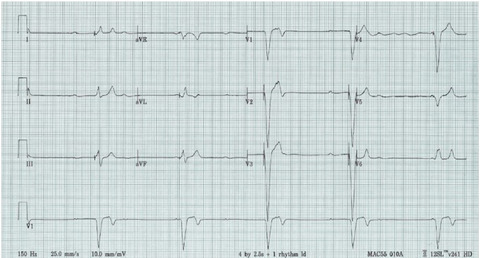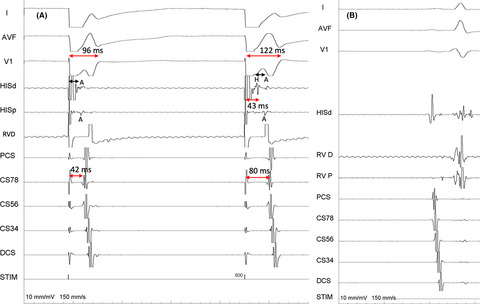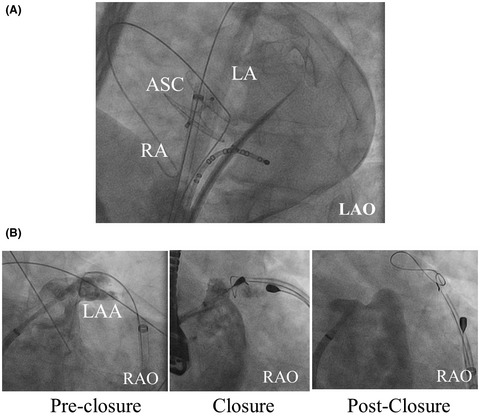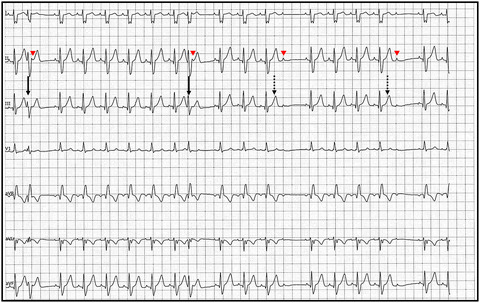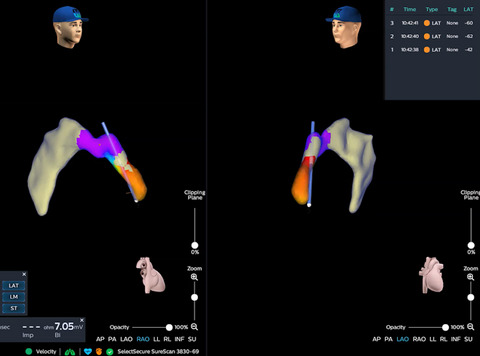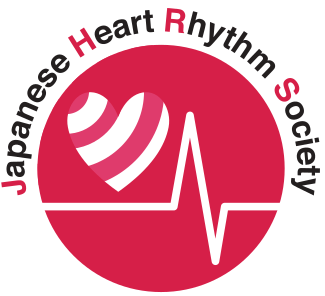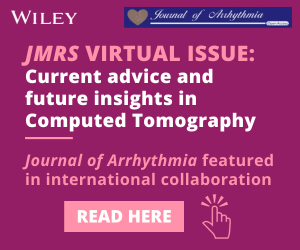Journal list menu
Export Citations
Download PDFs
ISSUE INFORMATION
EDITORIAL
Solution for transvenous lead extractions in developing countries
- Page: 1123
- First Published: 14 June 2021
ORIGINAL ARTICLES
Procedural outcome of lead explant and countertraction-assisted femoral lead extraction in Thai patients with cardiac implantable electronic device infection
- Pages: 1124-1130
- First Published: 05 August 2021
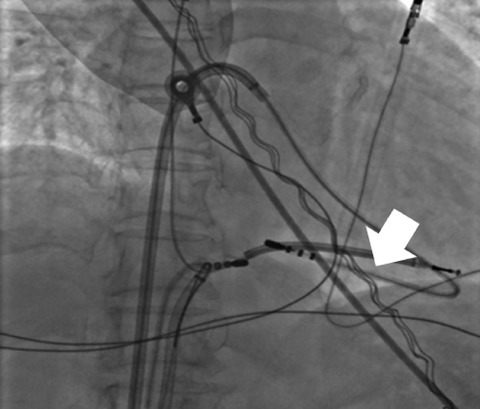
Countertraction is the cornerstone of the lead extraction in preventing of right ventricular (RV) inversion with less complications. Improvised technique, using telescopic system consisted of ablation catheter and deflectable sheath placement at RV apex, provided countertraction force whilst applying femoral lead extraction.
Computed tomography validated right ventricular mid-septal lead implantation using right ventricular angiography
- Pages: 1131-1138
- First Published: 11 July 2021
Left bundle branch area pacing: Electrocardiographic features
- Pages: 1139-1147
- First Published: 07 August 2021

Left bundle branch area pacing results in narrower paced QRS duration than right ventricular apical pacing with most commonly qR or Qr pattern in lead V1. Patients with baseline right bundle branch block showed lesser paced QRS shortening in comparison to patients with baseline left bundle branch block.
Incidence and predictors of early and late sudden cardiac death in hospitalized Japanese patients with new-onset systolic heart failure
- Pages: 1148-1155
- First Published: 18 August 2021
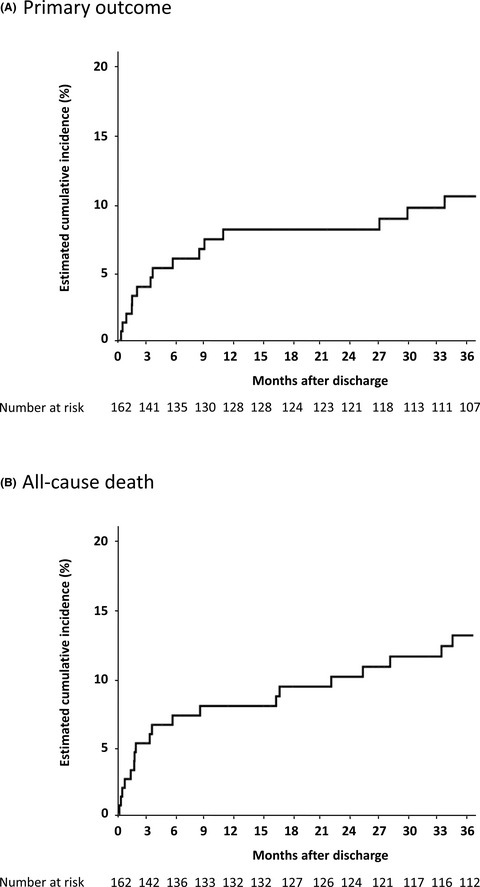
There were high incidences of the primary outcome (sudden cardiac death, sustained ventricular tachycardia/fibrillation, and appropriate implantable cardioverter-defibrillator therapy) and all-cause death within 12 months, especially within 3 months, after discharge in hospitalized Japanese patients with new-onset heart failure and LVEF ≤35%.
Fragmented QRS on far-field intracardiac electrograms as a predictor of arrhythmic events
- Pages: 1156-1161
- First Published: 21 August 2021

We enrolled patients with implantable cardioverter defibrillator (ICD) and structural heart disease and evaluated the surface electrocardiogram (ECG) and intracardiac electrogram (EGM) measurement of fQRS and the association between fQRS and arrhythmic events.Appropriate ICD therapies were significantly higher in patients with fQRS on both surface ECG and ICD EGM than in those without.Surface ECG and ICD-EGM measurement may help predict ventricular arrhythmic events.
CLINICAL REVIEW
Differential diagnosis of wide QRS tachycardia: A review
- Pages: 1162-1172
- First Published: 09 August 2021
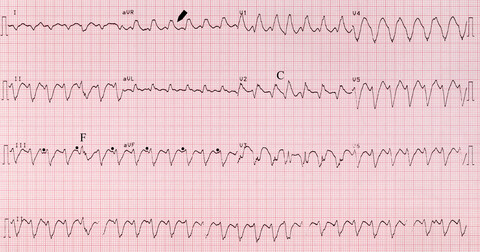
The diagnosis of wide QRS tachycardia can be challenging, but is essential for appropriate therapy. The differentiation is often between supraventricular tachycardia with aberrant conduction and ventricular tachycardia. A review of historical, clinical, electrocardiographic information during wide QRS tachycardia while keeping in mind the pitfalls and exceptions, may help arrive at the correct diagnosis with reasonable accuracy and confidence
ORIGINAL ARTICLES
Prevalence and characteristics of the Brugada electrocardiogram pattern in patients with arrhythmogenic right ventricular cardiomyopathy
- Pages: 1173-1183
- First Published: 30 August 2021
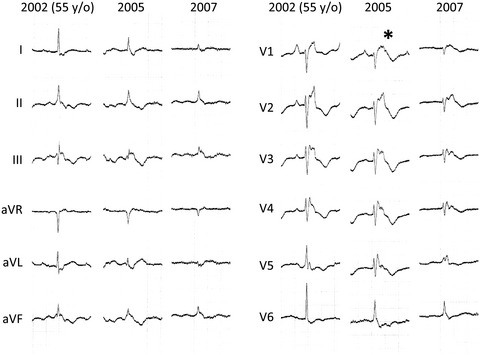
Despite distinct pathophysiology, several reports have suggested overlapping phenotypes between arrhythmogenic right ventricular cardiomyopathy (ARVC) and Brugada syndrome. A Brugada ECG pattern was transiently recorded at least once in 5 out of 114 ARVC patients (4%). A transient Brugada ECG pattern (*) was associated with cardiac death in patients with ARVC.
QT interval and repolarization dispersion changes during the administration of hydroxychloroquine/chloroquine with/without azithromycin in early COVID 19 pandemic: A prospective observational study from two academic hospitals in Indonesia
- Pages: 1184-1195
- First Published: 28 August 2021
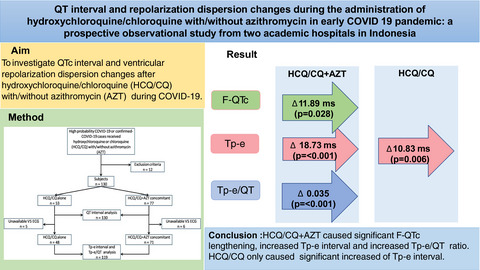
HCQ/CQ + AZT concomitant treatment caused significant F-QTc lengthening, significantly increased Tp-e interval and increased Tp-e/QT ratio. Whereas, HCQ/CQ alone only caused significantly increased Tp-e interval. The incidences of severe QTc lengthening and severe QTc prolongation, as well as arrhythmia, were similarly low in HCQ/CQ alone and HCQ/CQ + AZT concomitant.
New-onset atrial fibrillation in critically ill patients with coronavirus disease 2019 (COVID-19)
- Pages: 1196-1204
- First Published: 16 August 2021
Association of atrial fibrillation and various cancer subtypes
- Pages: 1205-1214
- First Published: 17 July 2021
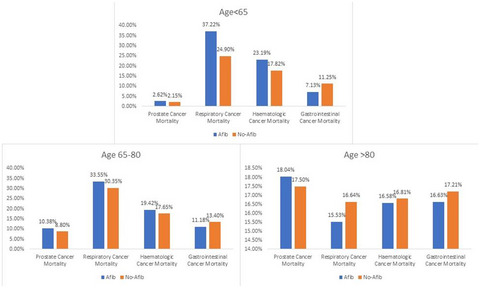
Our study found that in age <80, lung cancer and multiple myeloma have a strong association with AF while thyroid and pancreatic cancers have no association with AF at any age. In age greater than 80, NHL and prostate cancer have a significant association with AF. The highest mortality incidence in age <80 was found in lung cancer and in age >80 was seen in prostate cancer
Uric acid and incident atrial fibrillation of 14 years population-based cohort study: The Suita Study
- Pages: 1215-1219
- First Published: 11 August 2021

High UA was associated with an increased risk for incident AF in the Japanese population. During 95 178 person-years of follow-up, we observed 311 cases of incident AF (204 cases in men and 107 cases in women). Compared to the subjects with UA of 4.0-4.9 mg/dL, multivariable-adjusted HR (95% CIs) of incident AF was 1.50 (1.01-2.25) for the subjects with UA ≥7.0 mg/dL.
Usefulness of P-wave duration in patients with sick sinus syndrome as a predictor of atrial fibrillation
- Pages: 1220-1226
- First Published: 21 July 2021
One-year Follow-up Results of the Optimal Thromboprophylaxis in Elderly Chinese Patients with Atrial Fibrillation (ChiOTEAF) registry
- Pages: 1227-1239
- First Published: 11 August 2021
Effectiveness and safety of non-vitamin K antagonist oral anticoagulants in patients with non-valvular atrial fibrillation: A nationwide, population-based study in Korea
- Pages: 1240-1249
- First Published: 11 August 2021
Acute and long-term efficacy of ablation index-guided higher power shorter duration ablation in patients with atrial fibrillation: A prospective registry
- Pages: 1250-1259
- First Published: 21 July 2021
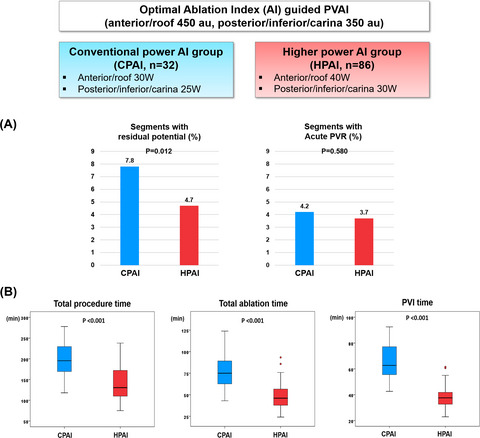
There are limited data regarding the acute and long-term efficacy and safety of applying higher power than conventional power targeting optimal ablation index (AI) value in our daily pulmonary vein isolation (PVI) procedure in patients with atrial fibrillation. In this study, we found that higher-than-conventional radiofrequency power PVI guided by optimal target AI showed comparable acute and long-term efficacy of PVI with reducing the procedure and ablation times without increasing the risk of complication. This study has shown that higher power strategy could be successfully implemented on the basis of conventional power AI guided PVI.
Regional differences in the predictors of acute electrical reconnection following high-power pulmonary vein isolation for paroxysmal atrial fibrillation
- Pages: 1260-1269
- First Published: 23 July 2021
Fast anatomical mapping of the carina and its implications for acute pulmonary vein isolation
- Pages: 1270-1277
- First Published: 19 July 2021
The impact of current strategy using intracardiac echocardiography, lesion index, and minimum substrate ablation on clinical outcomes after catheter ablation procedure for atrial fibrillation
- Pages: 1278-1286
- First Published: 05 August 2021
Repeat procedures for recurrent persistent atrial fibrillation: A propensity-matched score comparison between left atrial linear ablation with radiofrequency and posterior wall isolation with the cryoballoon
- Pages: 1287-1294
- First Published: 10 August 2021
A novel approach for effective superior vena cava isolation using the CARTO electroanatomical mapping system
- Pages: 1295-1302
- First Published: 13 August 2021

In our study, spontaneous RA-SVC conduction block was observed in approximately 80% of the patients. The block group required fewer RF deliveries for SVC isolation than the non-block group and the procedural time to SVC isolation in the block group was significantly less than in the non-block group. The size of the isolated area in the block group was larger than that in the non-block group.
Preventing atrial fibrillation by combined right isthmus ablation and cryoballoon pulmonary vein isolation in patients with typical atrial flutter: PAF-CRIOBLAF study
- Pages: 1303-1310
- First Published: 28 August 2021
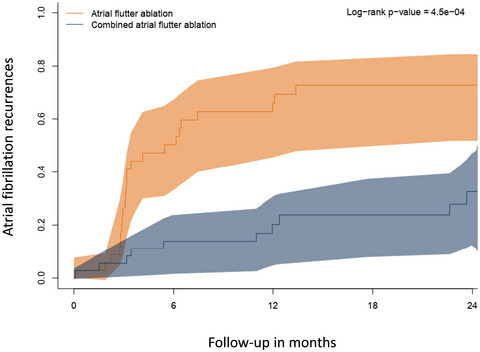
Atrial flutter (AFl) patients with prior occasionally recorded atrial fibrillation (AF) were randomly assigned to undergo cavo-tricuspid isthmus (CTI) ablation or CTI plus pulmonary vein isolation (combined atrial flutter ablation). AF was neither the predominant (67% of the population with only one recorded AF episode) nor the targeted arrhythmia. At 2-year FU, AF recurrences were significantly higher in atrial flutter ablation group vs combined atrial flutter group with similar AFL recurrences.
Catheter inversion during cavotricuspid isthmus catheter ablation: The new shaft visualization catheter reduces fluoroscopy use
- Pages: 1311-1317
- First Published: 11 July 2021
Persistence of left atrial abnormalities despite left atrial volume normalization after successful ablation of atrial fibrillation
- Pages: 1318-1329
- First Published: 28 August 2021
Anatomical evaluation of the esophagus using computed tomography to predict acute gastroparesis following atrial fibrillation ablation
- Pages: 1330-1336
- First Published: 28 August 2021
Contribution of HCN1 variant to sinus bradycardia: A case report
- Pages: 1337-1347
- First Published: 13 July 2021
CARDIAC ARRHYTHMIA SPOT LIGHT
Atrial septal perforation with Needle's Eye Snare during transvenous lead extraction
- Pages: 1348-1350
- First Published: 11 July 2021
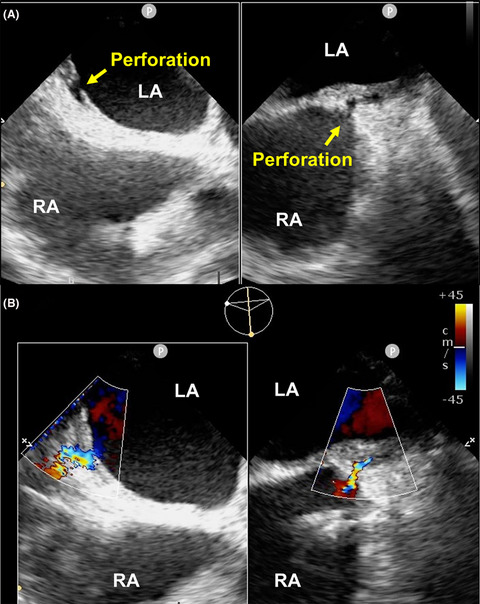
Although the Needle's Eye Snare (Cook Medical) has been considered useful for lead extraction, serious complications can occur. We presented a case of atrial septal perforation associated with the Needle's Eye Snare. Our case highlights the importance of not persisting with the Needle's Eye Snare to prevent atrial damage.
Treatment of pacemaker-induced superior vena cava syndrome by venoplasty with a coronary balloon
- Pages: 1351-1353
- First Published: 19 July 2021
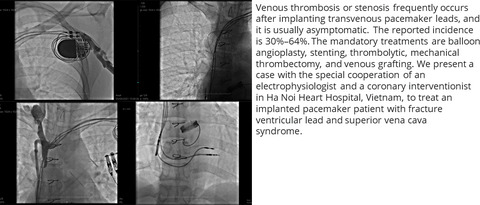
How to deal with SVC syndrome and fractured lead with a coronary wire and a coronary balloon. Step by step procedure: Detection of fracture ventricular lead -> Detection of SVC occlusion by venogram -> Unable to pass Terumo wire through obstructed SVC and trying with coronary wire and balloon-> Successful implanting a new ventricular lead.
Unusually short VA time during Para-His pacing maneuver: Is it a simultaneous atrial capture?
- Pages: 1354-1356
- First Published: 21 July 2021
Epicardial left atrial appendage closure with the lariat device in a patient with atrial septal closure
- Pages: 1357-1358
- First Published: 11 August 2021
Visualization of the preferential conduction pathway in a case of premature ventricular contractions arising from the pulmonary artery
- Pages: 1359-1361
- First Published: 19 July 2021
Shark fin sign
- Pages: 1362-1363
- First Published: 14 July 2021

1. We demonstrate a case diffuse tombstone-like QRS-ST segment elevations in the inferior and anterolateral leads -shark Fin sign. The transient diffuse tombstone-like ECG changes (Shark fin sign) seen in our patient were most consistent with multivessel coronary vasospasm likely secondary to hemopericardium.
Combined therapy with subcutaneous implantable cardiac defibrillator and leadless pacemaker in a patient with persistent left superior vena cava and mega coronary sinus: A challenging case for the best treatment
- Pages: 1364-1367
- First Published: 05 August 2021
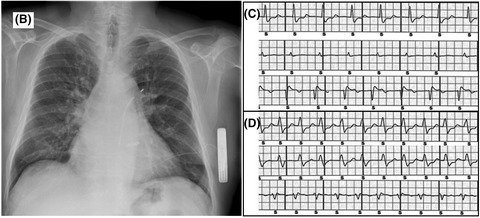
In a patient requiring pacing and defibrillation therapy, but without superior venous access, combined therapy with S-ICD and leadless pacemaker could be the best solution. An appropriate programming of both devices represents the technical challenge in order to avoid inappropriate shocks due to leadless pacing oversensing.
EPS FOR RESIDENT PHYSICIANS
Intra-His bundle block with Wenckebach phenomenon
- Pages: 1368-1370
- First Published: 10 August 2021
Point density exclusion mapping—A useful tool for mapping arrhythmias arising from the endocavitary structures
- Pages: 1371-1373
- First Published: 23 July 2021
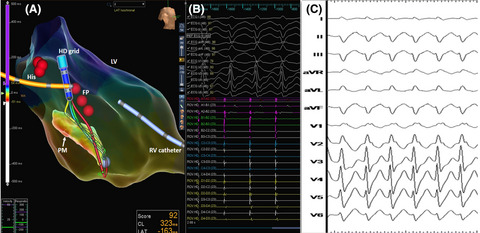
Ventricular tachycardia arising from the papillary muscles and other endocavitary structures are preferably ablated under intracardiac echocardiographic (ICE) guidance whenever feasible. However, the availability, need of trained operators, and the expenses involved restrict the routine use of ICE in many cath labs. Point density exclusion (PDX) mapping is a simple technique that doesn't demand any additional expense or tool apart from the routine electroanatomical mapping and thus can be widely applied in mapping of arrhythmias arising from endocavitary structures. The following report describes such a case and explains the method of performing PDX mapping
ECG FOR STUDENTS & ASSOC. PROFESSIONALS
Loss of left ventricular component of biventricular pacing with low atrial rhythm, what is the mechanism?
- Pages: 1374-1376
- First Published: 17 August 2021
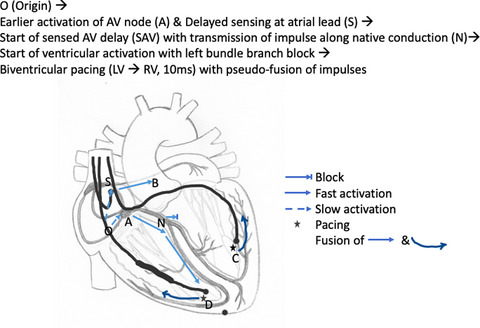
Effective biventricular pacing is important to improve survival in patients with heart failure. We report a case of a patient with heart failure, who underwent cardiac resynchronization therapy, who had loss of biventricular pacing when in low atrial rhythm. We discuss the probable mechanism for the same.
Hyponatremia induced Brugada syndrome mimicking ST segment elevation myocardial infarction
- Pages: 1377-1379
- First Published: 14 August 2021
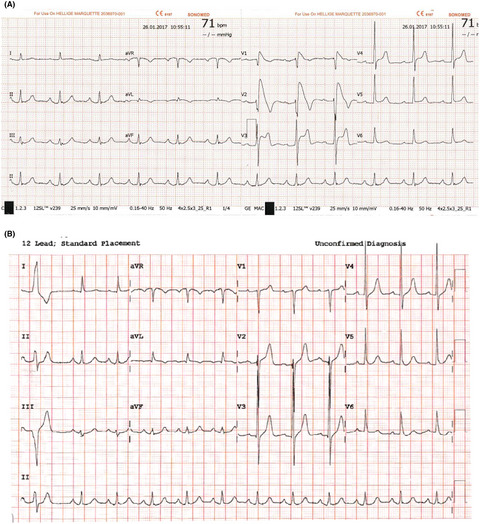
Seventy-three year-old male with history of diabetes, hypertension, and chronic kidney disease stage 3 presented with epigastric pain and hyponatremia. ECG showed new ST segment elevation at precordial leads consistent with Cove-type Brugada ECG pattern. Cardiac catheterization revealed non-significant coronary artery stenosis. He experienced pre-syncope and palpitations a year prior to admission with family history sudden cardiac death. Brugada syndrome was diagnosed. Cove-type Brugada ECG pattern and palpitations resolved with corrected sodium to 135.
Intermittent atrio-ventricular block and ectopy in an infant following complex heart surgery: Occam's razor versus Hickam's dictum
- Pages: 1380-1382
- First Published: 27 August 2021
RAPID COMMUNICATION
Cardiac resynchronization therapy guided by the new KODEX-EPD imaging system
- Pages: 1383-1387
- First Published: 30 August 2021





